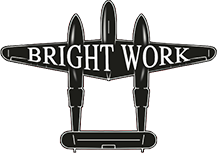When the winter’s over and a new season begins, it's time to think about ways…
The Pros and Cons of High Wing vs. Low Wing Aircrafts
Are you thinking of buying an aircraft? There are many different factors to consider when choosing the right aircraft for your lifestyle and needs. One of the many decisions that you will have to make is whether you want a high wing or low wing aircraft. This isn’t about which aircraft design you think looks better—there is much more to it that. Before you purchase a plane, make sure you understand the advantages and disadvantages of both a high and low wing aircraft.
Landing
Pilots should always exercise extreme caution when landing a plane to protect themselves and their aircraft, however they may have to be extra careful when landing a low wing plane. Because the wings of a low wing aircraft are so close to the ground, pilots must be absolutely certain that they are avoiding all obstacles that may be on the ground. Colliding with a taxiway light or a tie-down as you are attempting to land a low wing plane could damage the wings. Fortunately, pilots that fly high wing aircrafts do not have to worry about this as much because the wings are much higher off of the ground.
The Pilot’s View
One of the best parts about being a pilot is getting to see the world from an entirely new angle. But unfortunately, many pilots find that they are unable to get a good look at the world below if they are flying a low wing plane. This is because the wings on this type of aircraft block the view of the ground, so pilots can only clearly see what’s in front and above them. However, you won’t run into this problem with a high wing plane. Pilots will have an unobstructed view of the world below, so if this is important to you, choose an aircraft with high wings.
Safety
As a pilot, you probably try to avoid thinking of the dangers that flying, but it’s important to think about these things so you can prepare for the worst case scenario. In general, low wing aircrafts have an advantage over high wing aircrafts when it comes to safety. This is because the wings of a low wing aircraft will absorb much of the impact of an emergency landing, whereas in a high wing aircraft, the fuselage would be the first part of the plane to make contact with the ground.
Low wing aircrafts are also safer for emergency water landings. A low wing plane may be able to float on top of the water for a few minutes, which gives you enough time to safely exit the plane.
Basic Maintenance
The basic maintenance needs of high wing and low wing aircrafts are basically the same. But, pilots often comment on the difference between fueling a low wing vs. a high wing aircraft. Because of the positioning of the fuel tank, it is much easier to fuel a low wing aircraft while it is on the ground. Most pilots will be able to reach the fuel tank without any trouble at all. However, it’s very likely that you will need a ladder to reach the height of a fuel tank on a high wing plane.
But, pilots should also know that there is a downside to maintaining low wing planes. The low wing design makes it much more challenging to closely look at the underside of the wings. It’s still possible to inspect the underside of the wings, of course, but some pilots may not make the effort to do so because of the difficulty involved, which is a mistake.
Comfort Level
What type of plane do you have experience flying? For many pilots, the decision comes down to what plane they feel the most comfortable in. If you have only flown low wing planes, it may be a good idea to stick to this design unless you are eager to try something new. But, it’s best to try before you buy, so take a high wing aircraft up in the air before you commit to buying one for yourself. If you’ve flown both, you may find that you get a better feeling in one over the other. Some pilots don’t like the idea of walking on the wings to get into a low aircraft, while others may prefer flying a low wing to a high wing plane. It doesn’t matter why you prefer one to the other—trust your instincts and choose the type that you think you will enjoy the most.
Shade
Temperatures can rise inside an aircraft if you’re flying on a hot summer day, which is why many pilots love the relief from the heat that a high wing plane provides. The high wings on this type of aircraft provide a little bit of shade for the pilot. Even though sunlight will still be coming into the plane from other directions, a little shade goes a long way when it’s hot outside. On the other hand, a low wing plane does not offer any shade. In fact, it’s possible that a low wing aircraft will reflect the sunlight right back into the aircraft, making it heat up even faster.
Are you ready to choose an aircraft? Regardless of which type of aircraft you decide on, it’s important to take good care of it once it’s yours. To preserve the beauty of your aircraft, look for the three-step Bright Work polishes. Bright Work polishes are aviation approved and designed to remove heavy oxidation, scratches, water spots, and cloudiness on the surface of your plane. The final step of the polishing process leaves your aircraft with a deep shine and smooth finish so it looks just as good as it did the day that you bought it!

This Post Has 0 Comments